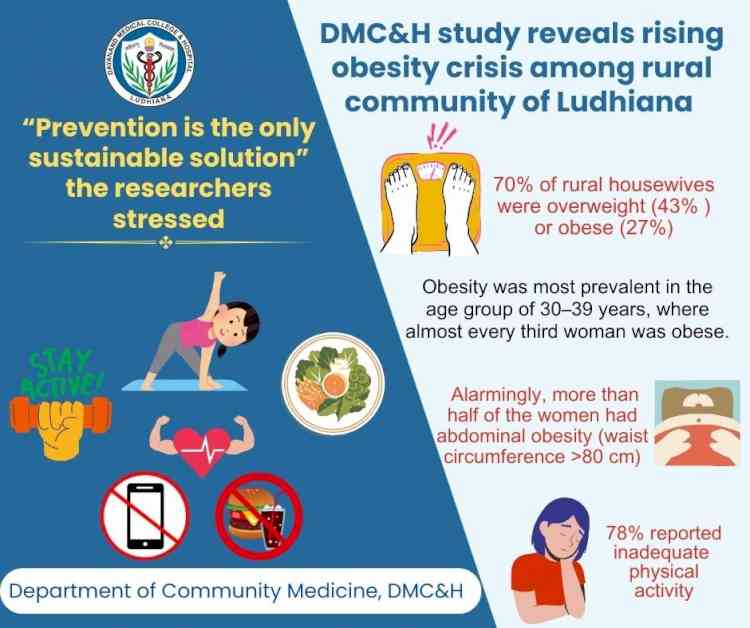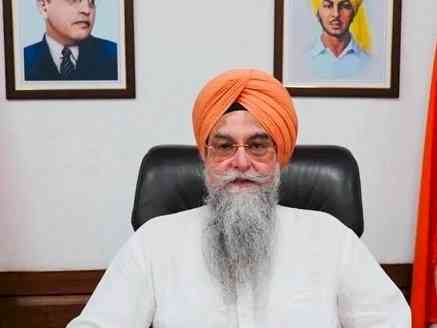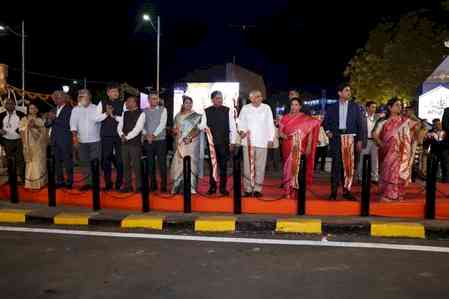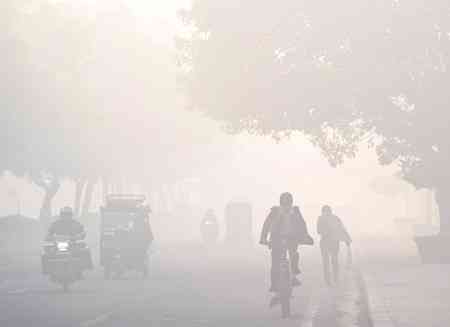DMC&H study Reveals Rising Obesity crisis among rural community of Ludhiana
A recent community-based study conducted by the Department of Community Medicine, DMC&H Ludhiana has raised concern over a growing health crisis—obesity is no longer confined to urban populations but is now silently spreading into rural Punjab.

Ludhiana, August 22, 2025: A recent community-based study conducted by the Department of Community Medicine, DMC&H Ludhiana has raised concern over a growing health crisis—obesity is no longer confined to urban populations but is now silently spreading into rural Punjab.
The cross-sectional survey was carried out among 610 housewives randomly selected from a rural population of 30,000 across 15 villages in Ludhiana district. Findings revealed that nearly 70% of rural housewives were overweight (43%) or obese (27%). Alarmingly, obesity was most prevalent in the age group of 30–39 years, where almost every third woman was obese. More than half of the women had abdominal obesity (waist circumference >80 cm), and 78% reported inadequate physical activity.
Bipin Gupta, Secretary, DMC&H Managing Society, said, “This study shows that health problems in our villages are changing fast. People’s involvement, regular awareness, and healthy lifestyle habits are very important. As an institution, DMC&H is committed to keep our community healthy by spreading awareness among general public.
Dr. Gurpreet Singh Wander, Principal & Cardiologist, DMC&H, stated that “The rising prevalence of obesity, hypertension, and diabetes in rural areas is a matter of serious concern. The adoption of urban lifestyle patterns—including reduced physical activity, increased social media use, and dietary shifts towards processed foods—is leading to a convergence of disease risk factors between rural and urban populations.”
Adding further, Dr. Anurag Chaudhary, Professor & Head, Department of Community Medicine, explained“Traditionally, rural women were considered physically active due to agricultural work and household chores. However, mechanization, easy access to calorie-dense packaged foods, and sedentary routines have made obesity an emerging public health challenge in these communities.”
The study also identified social, demographic, and behavioral factors associated with obesity. Women from higher-income rural households, with limited physical activity, preference for fried and processed foods, and prolonged screen time, were found to be at higher risk.
The research team, comprising Dr. Sarleen Kaur, Dr. Mahesh Satija, and Dr. Priya Bansal, cautioned that if immediate preventive measures are not taken, rural healthcare systems will soon be overburdened with the same chronic lifestyle diseases seen in urban centres. Obesity is not merely a cosmetic issue but a major risk factor for diabetes, hypertension, heart disease, osteoarthritis, and certain cancers. The study underlined that more young women are becoming obese, placing them at risk of chronic diseases at an earlier age.
The DMC&H experts strongly urged policymakers, Panchayats, and frontline health workers to initiate targeted awareness drives focusing on healthy diets, regular exercise, and reduced sedentary behaviour. “Prevention is the only sustainable solution,” the researchers stressed.
Wake-up call for Rural Punjab
Punjab, long known for prosperity and abundant food, is now facing the consequences The findings from this DMCH study should serve as a wake-up call not only for health authorities but also for rural families themselves—obesity is no longer just an urban problem, and preventive action must begin now.


 City Air News
City Air News 










